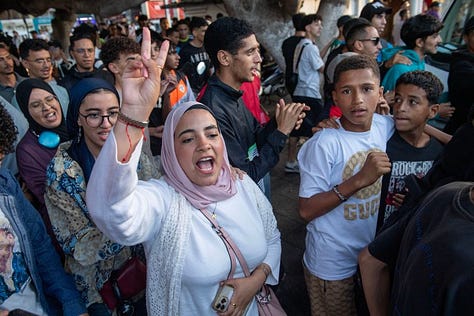Gen Z’s Rage and the Meaning of a Real Revolution
Why true change is not about tearing down governments but building systems that serve people
I. The New Face of Rebellion
From Nepal to Morocco, from Madagascar to Georgia, young people are rising up. They use phones instead of pamphlets, hashtags instead of manifestos. There are no leaders, no parties, no ideology, only anger and a shared belief that the system no longer works. Governments fall, parliaments collapse, but nothing truly changes. The same class takes back control, and the cycle begins again. That is not a revolution. It is repetition.



II. The Problem: Revolt Without Structure
Fast protests break things, but they rarely build. Without organization, leadership, and a plan for governance, uprisings lose momentum. The energy of the crowd fades, the streets empty, and old politicians quietly return. The fire of rebellion turns into smoke. That is the reality of leaderless revolts.
III. What a Real Revolution Requires
Real change begins with construction, not destruction. It demands organization, discipline, and a clear vision of governance. Values such as justice, transparency, and accountability must be turned into functioning institutions. That means laws that work, budgets that serve the public, and systems that keep power in check. Emotion can start a movement, but only structure can sustain it.
IV. The Purpose: From Destruction to Construction
A revolution is not only about rejecting what exists. It is about replacing broken systems with working ones. Real change happens when protest energy turns into policy, when words become public services, when ideas turn into institutions. Burning a building may feel powerful, but it does not build schools, hospitals, or jobs. True power is in construction, not in collapse.
V. The Lesson for This Generation
Gen Z has every reason to be angry. Inequality, corruption, and despair are real. But anger alone cannot build a future. The next step is to understand how power works, how decisions are made, and how systems can be redesigned to serve people. Revolution needs more than courage. It needs knowledge, patience, and a sense of responsibility. Before tearing down a system, learn how to build one that works better.
VI. Who Decides the Revolution
Revolution does not always mean destroying the state. But when a government stops feeling the people’s pain and serves only oligarchs and the ruling class, resistance becomes a moral duty. The question then is not whether revolt is justified, but who decides its shape and its limits. That power must return to the people, not to another elite or a single leader, but to the collective will. A real revolution draws its legitimacy from participation, not from force. It begins when ordinary people reclaim the right to decide how they are governed, and ends only when that right becomes part of daily life.
VII. A Final Word
The goal is not to destroy government. The goal is to build one that finally serves the people. Protest can expose injustice, but only discipline and structure can replace it with something better. Revolution is not about rage. It is about responsibility. It is about turning anger into organization, and organization into justice. The day people understand that, the revolution will already have begun.

It's a good question regarding revolution. And the best answer is Russia's and China's history in the 20th century. We have a vision of a revolution like something that happens from one day to another. But both Russia and China had decades of struggles and building people capable to lead but also to support their process. I don't think the oligarchs in any country are worried about paying the debt. They know they and their heirs are secured for generations.
It's hard to get a revolution going when there is a $37 trillion federal debt. How can government serve the people? We can't really pay it off now, over $300,000 per working taxpayer. Somehow that's got to get resolved before we can reset to a new vision.